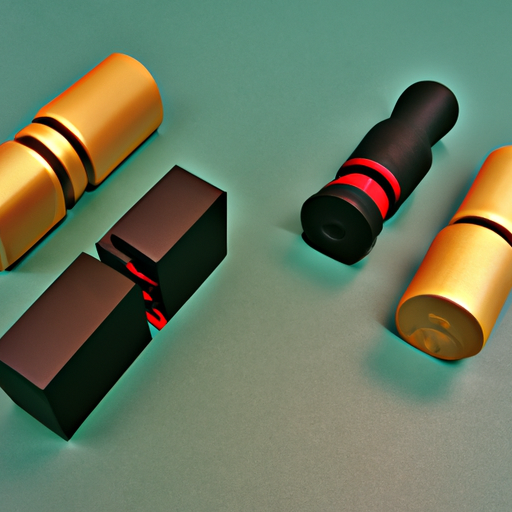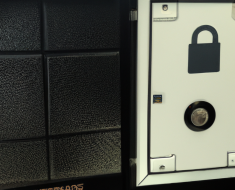“Unlock the power of precision with the right shotgun choke.”
Improved Cylinder vs Modified Choke: Which is Better for Hunting?
Shotgun chokes play a crucial role in determining the spread and range of your shot when hunting. They are designed to control the constriction of the barrel and affect how the pellets disperse as they leave the muzzle. There are several different types of shotgun chokes available, each with its own unique characteristics and benefits. In this article, we will be comparing two popular types of shotgun chokes: Improved Cylinder and Modified Choke.
The Improved Cylinder choke is known for its moderate constriction, which allows for a wider shot pattern at shorter distances. This makes it ideal for hunting game birds such as quail, pheasants, and grouse. The wider spread of pellets increases the chances of hitting a moving target, making it easier to take down fast-flying birds.
On the other hand, the Modified Choke offers a tighter constriction than the Improved Cylinder choke, resulting in a more concentrated shot pattern. This makes it well-suited for hunting waterfowl and larger game such as ducks and geese. The tighter spread of pellets ensures better penetration and increased accuracy at longer distances, making it easier to hit targets that are further away.
When deciding between an Improved Cylinder and Modified Choke for hunting, it ultimately comes down to the type of game you will be pursuing and the distance at which you will be shooting. If you are hunting smaller game birds in close proximity, the Improved Cylinder choke may be the better option due to its wider shot pattern. However, if you are targeting larger game or shooting at longer ranges, the Modified Choke may be more suitable for achieving accurate shots.
It is important to consider factors such as the terrain, weather conditions, and your own shooting abilities when choosing a shotgun choke. Experimenting with different chokes during practice sessions can help you determine which one works best for your hunting needs. Remember that every shotgun is unique, so what works well for one shooter may not necessarily work well for another.
Both the Improved Cylinder and Modified Choke have their own advantages and disadvantages when it comes to hunting. The key is to understand how each choke affects your shooting performance and adjust accordingly based on the specific requirements of your hunt. By selecting the right choke for your shotgun, you can improve your accuracy and increase your chances of success in the field.
In conclusion, when comparing Improved Cylinder vs Modified Choke for hunting purposes, there is no definitive answer as to which one is better. It all depends on your individual preferences and hunting style. Whether you prefer a wider shot pattern or a tighter spread of pellets, choosing the right shotgun choke can make a significant difference in your overall shooting experience. Experiment with different chokes to find what works best for you and enjoy a successful hunting season!
Understanding the Differences Between Full and Extra Full Shotgun Chokes
Shotgun chokes are an essential component of any shotgun, as they play a crucial role in determining the spread of shot pellets when firing. Two common types of shotgun chokes are Full and Extra Full chokes, each with its own set of characteristics and uses. In this article, we will explore the differences between Full and Extra Full shotgun chokes to help you understand which one may be best suited for your shooting needs.
Full chokes are designed to provide a tight shot pattern, making them ideal for longer range shooting. When a shotgun is equipped with a Full choke, the constriction at the end of the barrel forces the shot pellets to remain closer together as they travel towards the target. This results in a narrower spread of shot, which can be advantageous when aiming at small targets or targets that are farther away.
On the other hand, Extra Full chokes are even tighter than Full chokes, offering an even more concentrated shot pattern. Extra Full chokes are often used for trap shooting, where shooters need to consistently hit small clay targets at long distances. The increased constriction of an Extra Full choke can help improve accuracy and increase the chances of hitting the target with precision.
One important factor to consider when choosing between Full and Extra Full shotgun chokes is the distance at which you will be shooting. If you are planning on shooting at longer ranges, a Full choke may be more suitable due to its tighter shot pattern. However, if you need even more precision and control over your shots, an Extra Full choke may be the better option.
Another consideration when comparing Full and Extra Full shotgun chokes is the type of target you will be shooting at. If you are aiming at larger targets or targets that are closer in range, a Full choke may provide enough constriction to effectively hit your target. However, if you are targeting smaller or more distant objects, an Extra Full choke may offer the precision and accuracy needed to make successful shots.
It is also important to keep in mind that different shotgun chokes may perform differently depending on the type of ammunition being used. Some shotgun shells may perform better with a specific type of choke, so it is essential to test different combinations to determine which one works best for your shooting style.
In conclusion, understanding the differences between Full and Extra Full shotgun chokes can help you make an informed decision when selecting the right choke for your shooting needs. Whether you are looking for tighter shot patterns at longer ranges or increased precision for trap shooting, choosing the right choke can make a significant difference in your shooting performance. By considering factors such as distance, target size, and ammunition compatibility, you can determine which type of shotgun choke is best suited for your specific shooting requirements.
Choosing the Right Shotgun Choke for Trap Shooting

When it comes to trap shooting, choosing the right shotgun choke can make a significant difference in your performance. Shotgun chokes are devices that are inserted into the muzzle of a shotgun to control the spread of shot pellets. There are several different types of shotgun chokes available, each with its own unique characteristics and benefits.
One of the most common types of shotgun chokes is the improved cylinder choke. This choke has a moderate constriction, which allows for a wider shot pattern at longer distances. The improved cylinder choke is a versatile option that works well for trap shooting, as it provides a good balance between shot density and spread.
Another popular choice for trap shooting is the modified choke. This choke has a slightly tighter constriction than the improved cylinder choke, resulting in a denser shot pattern at longer ranges. The modified choke is ideal for shooters who want to achieve tighter groupings on targets that are further away.
For shooters looking for even tighter shot patterns, the full choke is an excellent option. The full choke has the most constriction of any shotgun choke, resulting in a very dense shot pattern at longer distances. This type of choke is best suited for experienced shooters who are confident in their ability to consistently hit targets at extended ranges.
In addition to these traditional shotgun chokes, there are also specialty chokes available that offer unique benefits for trap shooting. One such option is the skeet choke, which is specifically designed for shooting clay pigeons at close range. The skeet choke has a wide constriction that allows for a wider shot pattern, making it easier to hit fast-moving targets at short distances.
Another specialty choke that can be beneficial for trap shooting is the turkey choke. This type of choke has an extra tight constriction that produces an extremely dense shot pattern, making it ideal for shooting targets at long ranges. The turkey choke is perfect for shooters who are looking to maximize their chances of hitting difficult targets with precision.
When choosing a shotgun choke for trap shooting, it’s important to consider factors such as the distance of your shots, the size of your targets, and your own skill level. Experimenting with different types of chokes can help you determine which one works best for your individual needs and preferences.
In conclusion, selecting the right shotgun choke is essential for achieving success in trap shooting. Whether you prefer a more open shot pattern or tighter groupings, there is a shotgun choke available to suit your specific requirements. By understanding the characteristics of different types of chokes and experimenting with various options, you can improve your accuracy and performance on the trap field. So next time you head out to shoot some clays, make sure you have the right shotgun choke installed to give yourself the best chance of hitting your targets with precision and consistency.
Comparing Cylinder and Skeet Chokes for Sporting Clays
Shotgun chokes are a critical component of any shotgun used for hunting or shooting sports. They play a crucial role in determining the spread of the shot pattern and can greatly affect accuracy and performance. In this article, we will compare two popular types of shotgun chokes: cylinder and skeet chokes, specifically for sporting clays.
Cylinder chokes are designed to provide little to no constriction to the shot as it exits the barrel. This results in a wider shot pattern, making them ideal for shooting at close range targets. Cylinder chokes are often used in skeet shooting, where quick target acquisition and fast follow-up shots are essential.
Skeet chokes, on the other hand, provide a slight amount of constriction to the shot pattern. This helps to tighten the spread of the shot, making it more effective at longer ranges. Skeet chokes are commonly used in sporting clays competitions, where shooters are faced with a variety of target distances and angles.
When comparing cylinder and skeet chokes for sporting clays, it is important to consider the type of targets you will be shooting at. If you are primarily shooting at close-range targets with minimal variation in distance, a cylinder choke may be sufficient. However, if you are facing a mix of short and long-range targets, a skeet choke may provide better versatility and consistency.
Another factor to consider when choosing between cylinder and skeet chokes is your shooting style and skill level. If you are a beginner or intermediate shooter who is still developing your technique, a cylinder choke may be more forgiving and easier to use. On the other hand, if you are an experienced shooter looking to maximize your performance, a skeet choke may offer greater precision and control.
In addition to target distance and shooter skill level, it is also important to consider the size and weight of the shot you will be using. Heavier shot loads typically benefit from tighter chokes like skeet chokes, as they help to keep the shot pattern concentrated at longer ranges. Lighter shot loads may perform better with cylinder chokes, which allow for a wider spread that can help compensate for any inconsistencies in your aim.
Ultimately, the best choice between cylinder and skeet chokes for sporting clays will depend on your individual preferences and shooting goals. Experimenting with different chokes and evaluating their performance on the range can help you determine which option works best for you.
In conclusion, both cylinder and skeet chokes have their own unique advantages and applications when it comes to sporting clays shooting. Understanding the differences between these two types of chokes can help you make an informed decision when selecting the right choke for your shotgun. Whether you prefer the wide spread of a cylinder choke or the tighter pattern of a skeet choke, choosing the right choke can make a significant impact on your shooting performance.
Turkey Hunting: Using a Tighter Choke for Better Accuracy
Shotgun chokes are an essential component for any hunter looking to achieve better accuracy and precision while out in the field. When it comes to turkey hunting, using a tighter choke can make all the difference in ensuring a clean and ethical shot. In this article, we will compare different types of shotgun chokes and discuss why using a tighter choke is beneficial for turkey hunting.
Firstly, let’s talk about what a shotgun choke actually is. A choke is a constriction at the end of a shotgun barrel that controls the spread of the shot pellets as they leave the gun. There are several different types of chokes available, ranging from cylinder chokes, which provide minimal constriction and therefore a wider shot pattern, to full chokes, which provide maximum constriction and therefore a tighter shot pattern.
When it comes to turkey hunting, using a tighter choke such as a full choke or extra-full choke is highly recommended. The reason for this is simple – turkeys have small vital areas that need to be targeted in order to ensure a quick and humane kill. By using a tighter choke, you are able to concentrate the shot pellets into a smaller area, increasing your chances of hitting the vital organs and bringing down your target quickly and efficiently.
Another benefit of using a tighter choke for turkey hunting is the increased range and penetration that it provides. Turkeys are notoriously tough birds with thick feathers and strong bones. Using a tighter choke allows you to deliver more energy to the target at longer distances, increasing your chances of making a clean kill even when shooting from further away.
It’s important to note that while using a tighter choke can improve your accuracy and range, it also requires more precise aiming on your part. With a tighter shot pattern, there is less room for error, so it’s crucial to practice shooting with your chosen choke before heading out into the field.
In addition to full chokes and extra-full chokes, there are also specialized turkey chokes available on the market that are specifically designed for turkey hunting. These chokes typically feature even tighter constrictions than traditional full chokes, further enhancing your ability to deliver lethal shots on target.
When choosing a shotgun choke for turkey hunting, it’s important to consider factors such as your shooting style, preferred range, and the specific conditions of your hunting environment. Experimenting with different chokes and loads can help you find the perfect combination for your needs.
In conclusion, using a tighter choke such as a full choke or extra-full choke is essential for achieving better accuracy and precision while turkey hunting. By concentrating the shot pellets into a smaller area, you increase your chances of hitting vital organs and bringing down your target quickly and efficiently. Remember to practice with your chosen choke before heading out into the field, and consider factors such as shooting style and environmental conditions when selecting the right choke for your needs. Happy hunting!






